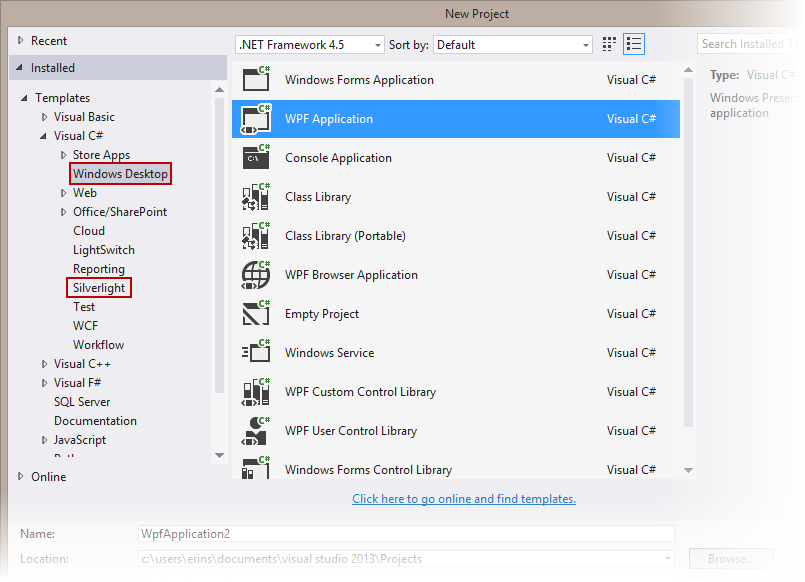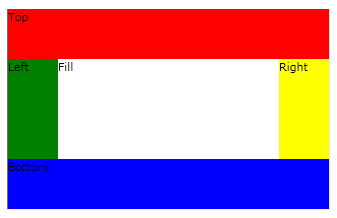DockPanel Quick Start
The following quick start guide is intended to get you up and running with DockPanel for WPF and Silverlight. In this quick start, you'll create a new project in Visual Studio, and add elements docked on the top, bottom, left, right, or even fill the C1DockPanel.
Step 1
To set up your project, complete the following steps:
In Visual Studio, select File | New Project.
In the New Project dialog box, select either Windows Desktop or Silverlight from the Templates in the left-hand pane.

New Project Dialog
Select WPF Application or Silverlight Application, depending on the template you chose.
Enter a Name for your project, for example "QuickStart", and click OK. In a WPF Application, the MainWindow.xaml file will open.
If you selected a Silverlight Application, when you click OK, the New Silverlight Application dialog box will appear.
Click OK to accept default settings. This will close the New Silverlight Application dialog box and create your project.
The MainPage.xaml file should open.
Add the following assemblies to your application by right-clicking the References folder and selecting Add Reference:
WPF: C1.WPF.4.dll
Silverlight: C1.Silverlight.5.dll
In the next step, you'll add and style C1DockPanels.
Step 2
In this step we'll add and style several C1DockPanels.
First, remove the Grid tags from your project.
From the Visual Studio Toolbox, drag a C1DockPanel control to the page.
Place your cursor in between the <c1:C1DockPanel> tags and enter the following XAML to add C1DockPanels on the left, right, top, and bottom and to fill the center of the screen:
<Border c1:C1DockPanel.Dock="Top" Height="50" Background="Red">
<TextBlock Text="Top" />
</Border>
<Border c1:C1DockPanel.Dock="Bottom" Height="50" Background="Blue">
<TextBlock Text="Bottom" />
</Border>
<Border c1:C1DockPanel.Dock="Right" Width="50" Background="Yellow">
<TextBlock Text="Right" />
</Border>
<Border c1:C1DockPanel.Dock="Left" Background="Green" Width="50" >
<TextBlock Text="Left" />
</Border>
<Border Background="White" >
<TextBlock Text="Fill" />
</Border>In the next step, you'll run the application.
Step 3
Now you're ready to run the application. From the Debug menu, select Start Debugging. Your application will look similar to the following, with four C1DockPanels on the top, right, left, and bottom and the center block filled:

Congratulations! You have successfully completed the DockPanel for WPF/Silverlight quick start.


